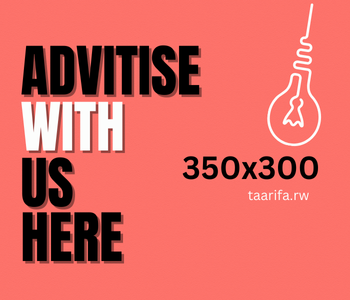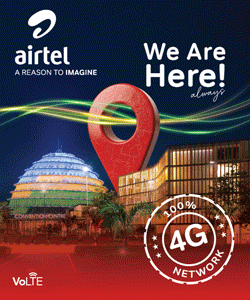In a ceremony that felt equal parts history and diplomacy, Rwanda and the Democratic Republic of Congo (DRC) signed a transformative peace agreement at the U.S. State Department in Washington on Friday—a deal many had thought politically impossible just months ago.
Behind the stagecraft and symbolic handshake between the two foreign ministers lay months of intense American diplomacy, quiet pressure, and an unmistakable shift in Washington’s engagement with Africa.
More than just a host, the United States served as broker, architect, and guarantor of the deal—nudging, negotiating, and ultimately stitching together a framework that ties together security, economics, and internal reconciliation.
Sources close to the talks told Taarifa that President Donald J. Trump took a personal interest in resolving the impasse, convinced that peace between Kigali and Kinshasa would serve both regional stability and U.S. strategic interests.
“This wasn’t just facilitation,” said one senior Rwandan diplomat. “It was deliberate, sustained U.S. pressure—and it paid off.”
At the center of it all was a moment that caught global attention: the handshake between Rwanda’s Foreign Minister Olivier J.P. Nduhungirehe and his DRC counterpart Thérèse Kayikwamba, under the watchful eye of Secretary of State Marco Rubio and Special Advisor Massad Boulos.
It wasn’t ceremonial. It was the quiet, firm gesture of two countries publicly agreeing to try again.
The agreement, hailed by all sides as a breakthrough, is structured around three interlocking commitments: security stabilization, with both parties recommitting to the Luanda roadmap and launching a Joint Security Coordination Mechanism; economic cooperation, with a strong emphasis on transparency, cross-border trade, and American investment; and internal reconciliation within the DRC, particularly regarding the M23 rebel movement, to be addressed under the ongoing Doha process.
On this historic Friday, two of the three pillars—security and economic cooperation—were formally signed in Washington, a step that one diplomat described as “substantive proof that this is more than a photo-op.”
By press time, delegates from both countries were preparing for a high-level meeting with President Trump—a rare diplomatic gesture that signals just how seriously the White House is treating this process.
For a sitting U.S. president to meet directly with foreign ministers before any formal heads-of-state engagement is highly unusual. But as one American official noted, “The president sees this as personal, urgent, and essential.”
The third component, internal Congolese reconciliation—particularly addressing the M23/AFC question—is being handled through the Doha process.
Once that file is finalized, the presidents of Rwanda and the DRC are expected to return to Washington for a joint meeting with President Trump to sign the full and final agreement.
No date has been set, but there is mounting urgency behind the scenes to conclude the process swiftly and comprehensively.
“This isn’t a quick fix,” said a U.S. official involved in the talks. “It’s a structured process. Washington laid the foundation, but implementation will happen in stages—and all eyes are on delivery.”
The first order of business is security. Central to the agreement is the neutralization of the FDLR, a militia comprised of remnants of the genocidal forces that fled Rwanda in 1994.
Kigali has long demanded their disarmament as a non-negotiable condition for peace.
This time, that demand is matched with a verification mechanism and shared oversight.
“FDLR is not a rebel movement—it is the leftover machinery of genocide,” said Minister Nduhungirehe. “Its presence is a threat not just to Rwanda but to peace itself.”
Under the new framework, Rwanda has agreed to begin lifting its defensive posture—on one condition: that support to the FDLR and similar groups ends irreversibly and verifiably.
Refugee return, facilitated by the UNHCR, was also agreed upon, with both parties acknowledging its urgency and sensitivity.
But it’s the second pillar—economic cooperation—that has Washington’s fingerprints all over it.
The U.S. made clear that a stable Great Lakes region must also be a prosperous one, and it is positioning American companies to be part of that growth.
According to a senior official familiar with the talks, American investors will now be encouraged to engage in responsible mineral extraction and processing, particularly in rare earths.
Crucially, the deal includes a mutual understanding: if companies choose Rwanda as a hub for mineral processing, this must not lead to political weaponization or blackmail.
“Rwanda’s role in the regional value chain must be seen through a lens of partnership, not rivalry,” the official said. “Transparency and cooperation must replace suspicion.”
Congolese officials, the source noted, responded with notable enthusiasm, welcoming the opportunity for cross-border trade, shared infrastructure, and joint development zones. In the words of one U.S. mediator, “The energy in the room shifted when business came up—suddenly, both sides were thinking forward.”
The third track—the internal reconciliation process around the M23 rebel group—will be addressed under a separate but parallel Doha negotiation, already underway.
While sensitive, all parties acknowledged that no durable peace could ignore internal grievances and rebel dynamics in eastern Congo.
One diplomat called the current dynamic “fragile but promising”—a phrase that echoed throughout the week.
For the United States, this agreement is more than a diplomatic win—it’s a signal of strategic re-engagement in a region often overshadowed by crisis headlines.
Trump’s involvement, while initially met with skepticism, is now being credited with giving the process a needed jolt.
“This is the kind of diplomacy that changes things,” said a Rwandan official. “Washington didn’t just host. It hauled the process to the finish line.”
The handshake between Nduhungirehe and Kayikwamba, framed against the marble walls of Foggy Bottom, felt like a declaration: that peace is possible when global power shows up with intention, not imposition.
As the delegations left the State Department, a diplomat from one of the involved missions summed it up in one line: “They signed the paper. Now the hard work begins. But for the first time in a long time, it feels like everyone wants it to succeed.”
And in diplomacy, wanting it to work is half the battle won.
https://x.com/rwandamfa/status/1938732880894566408?s=46




















